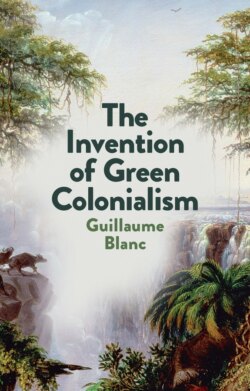Читать книгу The Invention of Green Colonialism - Guillaume Blanc - Страница 10
1 Deconstructing Our Beliefs, (Re)thinking Nature
Оглавление4January 2019, the suburbs of Debark, north of the Ethiopian highlands. Seated on a mattress on the bare ground, in a house constructed of wood and corrugated iron, Samson describes with bitterness the details of his everyday existence since his eviction: ‘They drove us out with sticks. […] They ordered us to leave in the name of UNESCO. […] We just can’t go on living like this. I feel as if I’m dying here.’1
The same feelings of despair have haunted Samson’s neighbours since they were brought into the town on 16 June 2016. On that day, in the early hours of the morning, guards from the Simien National Park arrived in Gich, a village with a population of 2,508 inhabitants, perched at an altitude of 3,800 metres. The villagers were agro-pastoralists, which means they combined growing crops and raising livestock on pasture lands. As a result, they were accused of destroying nature. That is why the park guards ended up forcibly evicting them from their mountains. On the evening of 16 June, the entire population of Gich were resettled in Debark, a small town situated 35 kilometres further west, outside the boundaries of the Simien National Park.
The Ethiopian state had succeeded, at last. In 1978, UNESCO had placed the Simien National Park on its list of world heritage sites but, in 1996, the park was relegated to the List of World Heritage in Danger. According to international experts, the reason for this change was that by cultivating the land and raising livestock, the local people were damaging the natural environment.2 Evicting them was seen as the solution to the problem, and, as a result, UNESCO offered its congratulations to Ethiopia, announcing on 12 July 2017 that the Simien National Park would be removed from the List of World Heritage in Danger.
The institution had yet another demand to make. Several thousand agro-pastoralists were still living in the park and UNESCO requested that they also be evicted. The Ethiopian leaders were ready to make this sacrifice because, as far as they were concerned, what mattered was to finally receive the reward for which they had waited twenty years: the reinstatement of the Simien Park on UNESCO’s prestigious list of world heritage sites.3
This victory came at a single price: the village of Gich. On the day following the eviction, the other inhabitants of the park entered the village. They dismantled the houses abandoned by their former neighbours and took away with them the wood they needed for cooking and keeping warm. As for the former inhabitants of Gich, they would try to adjust to the urban lifestyle imposed upon them. With little success. ‘I can’t take any more,’ Samson tells us, three years later. ‘It’s either death or a return to our land.’
